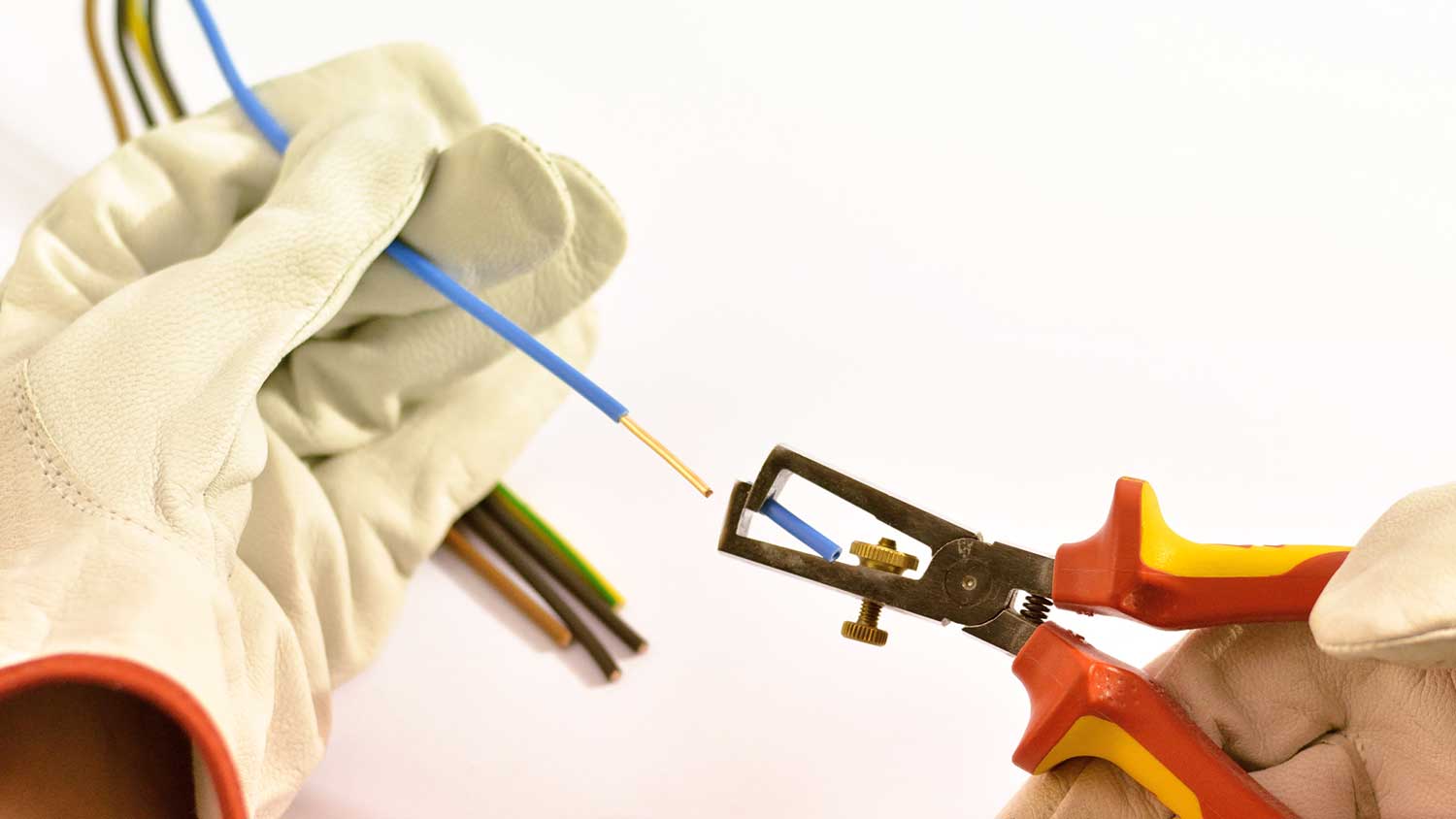
How much does it cost to add an electrical outlet in Atlanta? Learn about average prices, local permits, and what impacts the cost in the Atlanta area.
It’s a wire gauge-a-palooza


A wire’s gauge refers to its physical size.
The smaller the wire gauge number, the larger the wire’s diameter.
Each wire gauge features a maximum electrical current rating, measured in amperes (amps).
Prevent your circuit from overloading by ensuring you do not exceed the max amp rating.
At the root of it, wiring requires conductors that match the strength of the current (amperage) in a circuit.
As the amperage rating increases, you’ll need to help your outlets keep up by using larger gauge wires to disperse some of the heart. Otherwise, you might notice your plugs get hot as the wires melt, and, well, that’s not a good sign. But how do you know what gauge wire for outlets is right for your home? Your best choice will depend on the load on the circuit, the number of outlets in your home, how many fixtures you have, and the length of the circuit. Keep reading to learn more.

A wire’s gauge is just its size as determined by the American Wire Gauge (AWG) system. To simplify, when you talk about wire gauges, you’re talking about the physical size of the wires.
The system places numerical size designations on wires, but it works in reverse. The smaller the wire gauge number, the larger the wire’s diameter. Common sizes include 2-, 6-, 8-, 10-, 12-, 14-, and 16-gauge wires. A wire’s size dictates how much current can safely pass through it during use. Smaller numbers (which, remember, are bigger wires) can handle more current than larger numbers.
As previously stated, a wire’s gauge, or size, determines how much current passes through safely. But how exactly? Electrical current is measured in amps, and each specific wire gauge boasts a maximum safe amperage-carrying capacity.
When dealing with standard non-metallic (NM) cables, like copper-sheathed wires, it’s easy to match maximum amperage levels to the overall wire gauge. As long as your electrical current needs do not go beyond the amp rating of the wire’s gauge, you’re good to go. Here’s how these two metrics connect:
| Wire Gauge | Maximum Amps |
|---|---|
| 16 | 13 |
| 14 | 15 |
| 12 | 20 |
| 10 | 30 |
| 8 | 40 |
| 6 | 55 |
| 4 | 70 |
| 3 | 85 |
| 2 | 95 |
As we touched on before, you’ll notice that the smallest number in the table (2) can handle the most amps (95) because it’s actually the largest in diameter of all the gauges on the list.

Some homes feature aluminum wiring instead of copper wiring. Aluminum wiring has its own amp-carrying capacity, so don’t rely on the previous information if your home features aluminum wires. Generally speaking, aluminum and copper wires carry similar electrical loads when it comes to larger-gauge wires. However, as the gauge decreases and the wire size increases, aluminum’s overall capacity begins to shrink much quicker than copper’s capacity.
Aluminum wires also expand more than copper wires when under stress, which can lead to loosened connections and even electrical fires. This is why it’s incredibly important to talk to a pro about aluminum wire sizes and anything else relating to aluminum electrical components in your home. Talk to a local electrician to see if converting from aluminum to copper wires is a good idea for your needs.

Beyond size, it is worth considering the overall design of the wires in your home. In most scenarios, you’ll have solid or stranded wires. This does not refer to the sheathing (some wires boast stranded exteriors) but the shape of the wire itself.
Stranded wires split off into thin bundles that are each insulated with non-conductive materials.
This is the standard design in most homes and is likely what you picture when you think of wire. The strands give these wires incredible flexibility, making them great for fitting into tight spaces or twisting to fit certain setups. The downside? There’s a slight decrease in maximum current capacity compared to solid wires.
Solid wires consist of a solid conductor that does not bend in the same way that stranded wires do. This decreases installation options, particularly if your conduit has plenty of twists and turns. The upside? Solid wires offer higher current capacity and more durability.
Generally speaking, solid wires are the preferred choice for outdoor setups where you have plenty of room, and stranded wires are the best option for indoor setups where conserving space is a priority.
All of this information leads to one conclusion. Pay attention to the electrical loads of your appliances and gadgets, and make sure your circuit doesn't exceed the amount of power the wire gauge in that circuit is rated for. There are systems in place to protect against overheating wires, like circuit breakers and fuses, but these devices are not foolproof. Your best bet is to perform some simple electrical load calculations to guard against exceeding the limits of the amp service in your house’s circuits.
Danger lurks whenever an appliance or gadget tries to draw more power on a circuit than the wire gauge can handle, leading to overloading and, in some instances, electrical fires. For instance, if a heater rated for 20 amps plugs into a 15-amp circuit wired with 14-gauge wire (which can only handle 15 amps), you’ll likely run into trouble. The reverse, however, is not true, so feel free to plug appliances with low electrical loads into heavy-duty circuits and wires.
Go through your home and make a note of the amp ratings for various wires. Do the same for the circuits. Double-check that the power draw is below the threshold of both items.
Common household extension cords represent extreme danger when used incorrectly. According to the United States Consumer Product Safety Division, extension cords contribute to nearly 5,000 residential fires each year and 2,200 shock-related injuries.
Extension cords typically have low amperage ratings, so they can be easily overloaded, especially when delivering power to heavy-duty appliances. Limit the use of extension cords when powering items like portable heaters, microwaves, and dishwashers. If you must use extension cords throughout the home, opt for heavy-duty cords with high amperage ratings.
Hiring an electrician can cost around $163 and $535, with the average amount most people pay being $348—depending on the job. Hourly rates for electricians are typically $50 to $130, with a service call fee of $100 to $200 for the first hour of their time. This will vary depending on your electricians' experience, your location, the parts associated with your project, and if it’s an emergency.
Unless you’re a licensed electrician, it’s recommended that you don’t get any bright ideas about fixing your own electrical work. There are serious dangers associated with working on the electrical components of your house, such as electric shock and electrical fires, and you can cause serious damage to yourself and your home if you don’t know what you’re doing. It's best not to be shocked at your results and leave the electrical work to the professionals.
My ac system failed, and I was in disparate need of a new system without breaking the bank. The good people at Dixie Electric, Plumbing, and Air were amazing! Not only did I get a great price, but the technicians were able to install my new system in two days. The were on time and very...
I cannot say enough to properly express my satisfaction in working with Golden Master. I have a property that I cannot easily access. They went to the place, made an assessment, and performed the work perfectly. The fees were competitive. Later, the house had a different problem. They came...
After explaining to the operator the failure in my A/C unit, the technician arrived about 5 hrs. late. My wife explained the problem, and then put the tech on her phone and I explained the problem; A/C unit working in short cycles, cooling but not to the set temp on thermostat. The technician...
From average costs to expert advice, get all the answers you need to get your job done.

How much does it cost to add an electrical outlet in Atlanta? Learn about average prices, local permits, and what impacts the cost in the Atlanta area.

How much does an electrical box replacement cost in Atlanta? Learn what affects the price and how much you can expect to pay.

Wondering what rewiring a house costs in Atlanta? Find out what drives the price and how to plan for this important electrical upgrade in your area.

If your plugs are sliding out halfway after you insert them into the outlet, this is a fire hazard. Learn how to fix loose outlets in your home.

Exposed electrical wires present a serious hazard and it’s crucial to cover them properly. Find out how to cap off electrical wires safely and securely.

Wondering who to call for a fast and easy lamppost installation? Our guide covers who should install a lamppost and the general cost for this project.